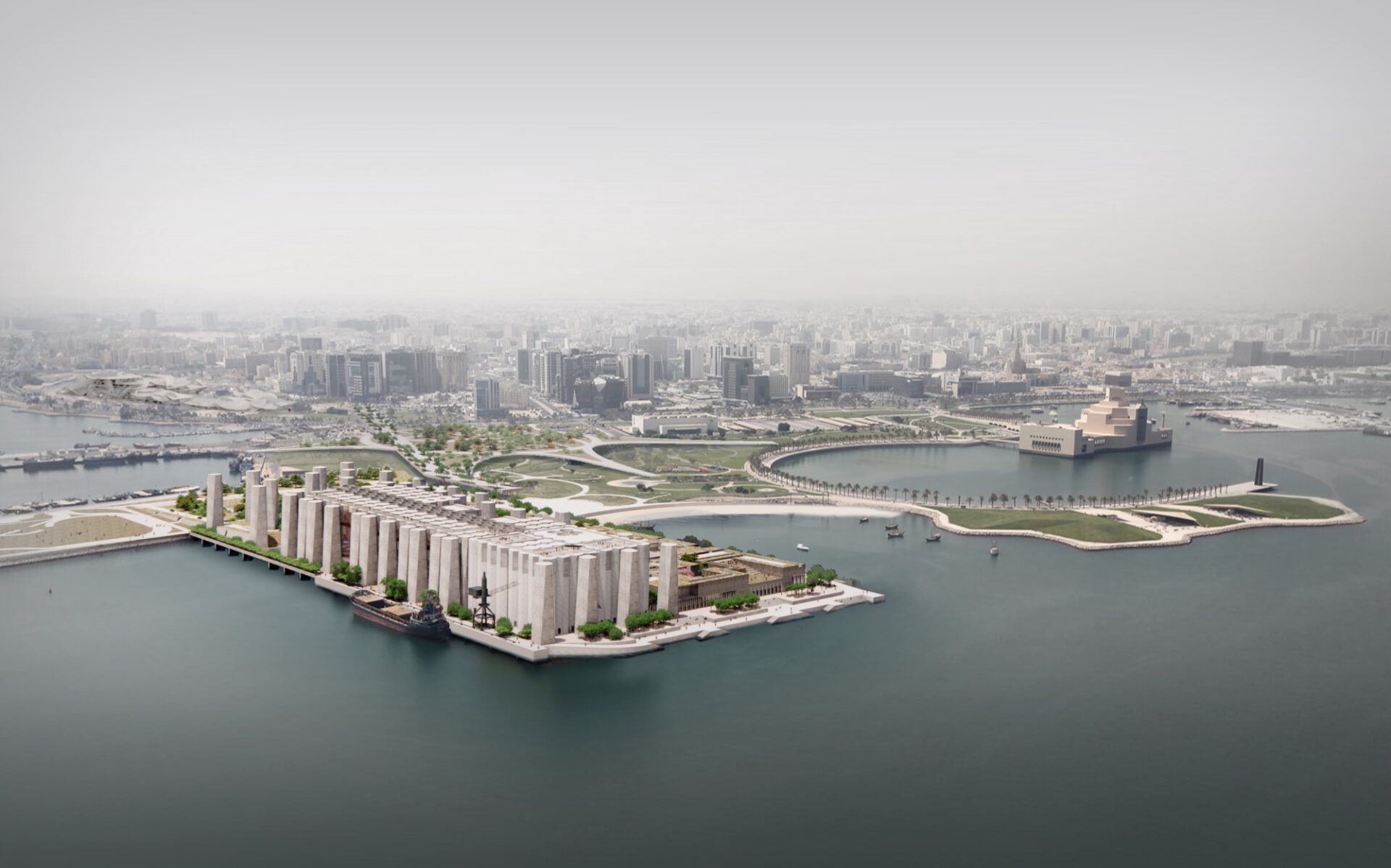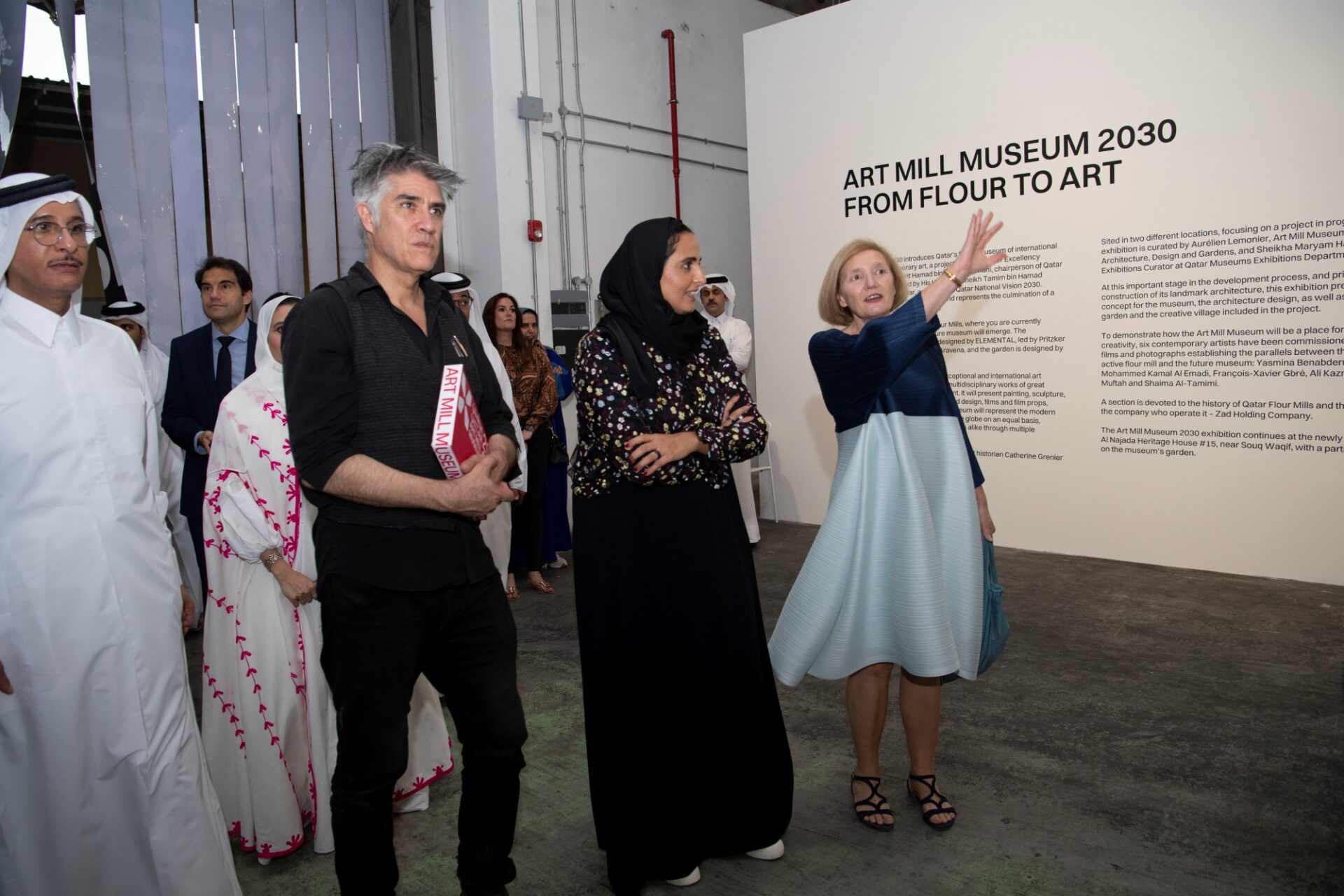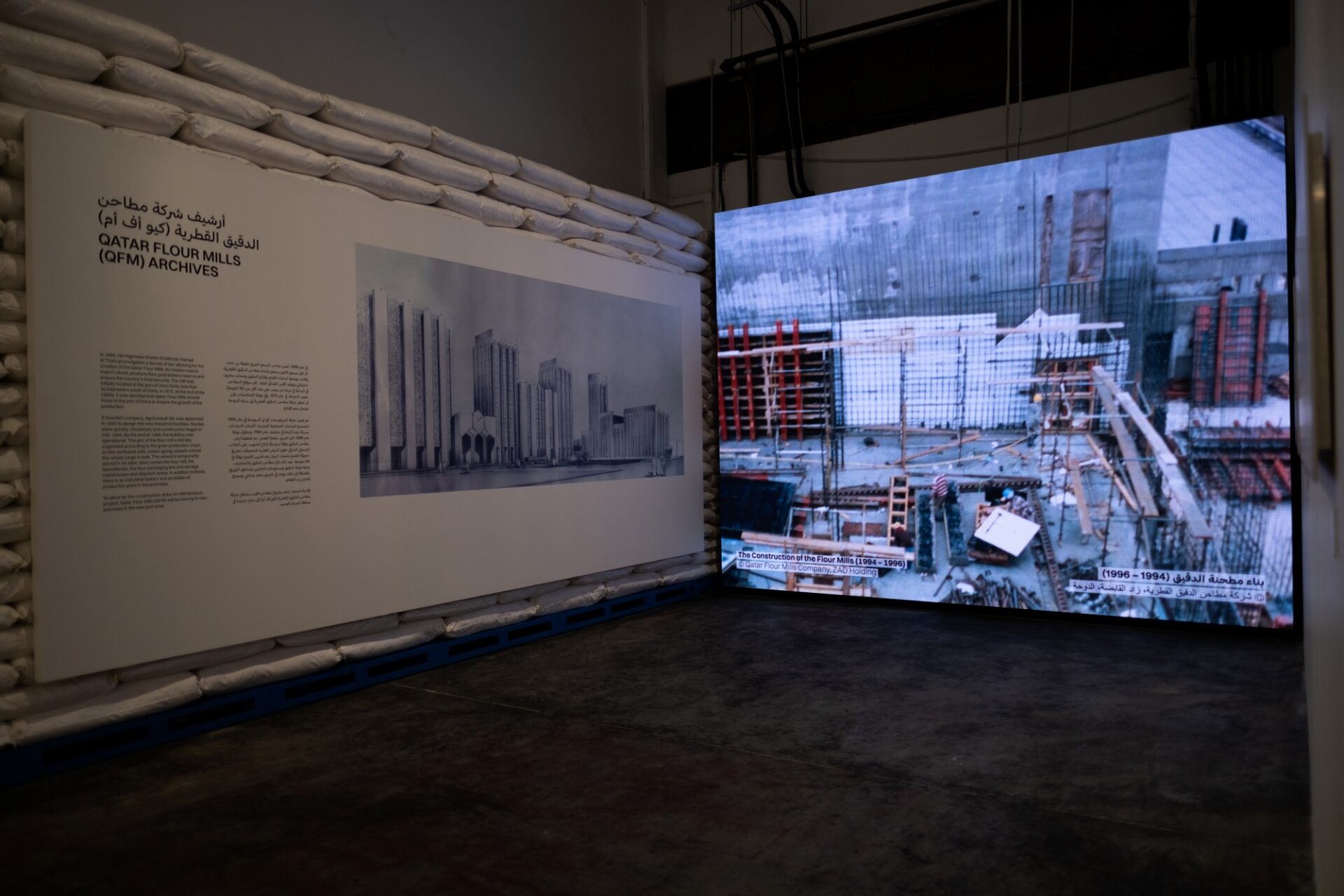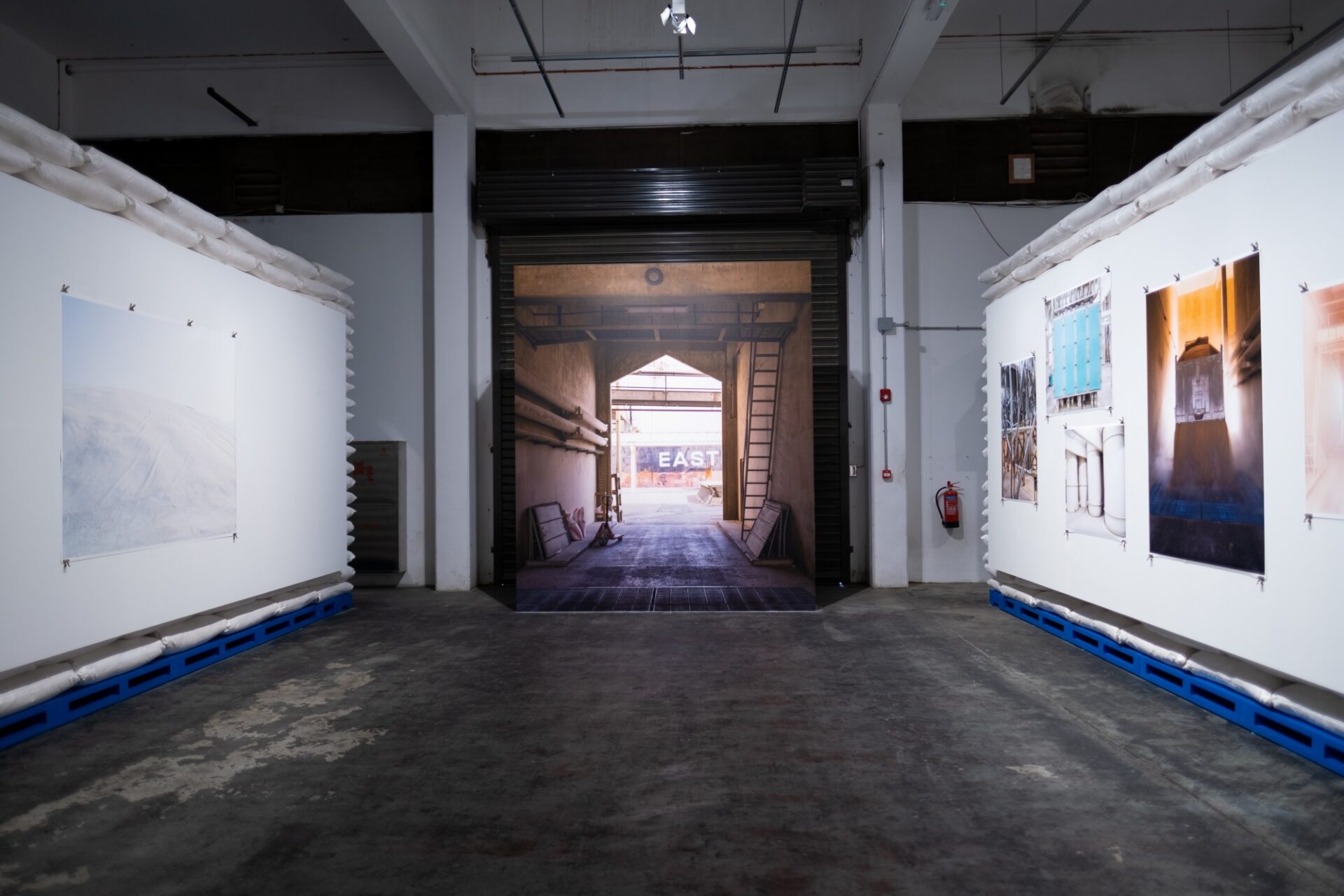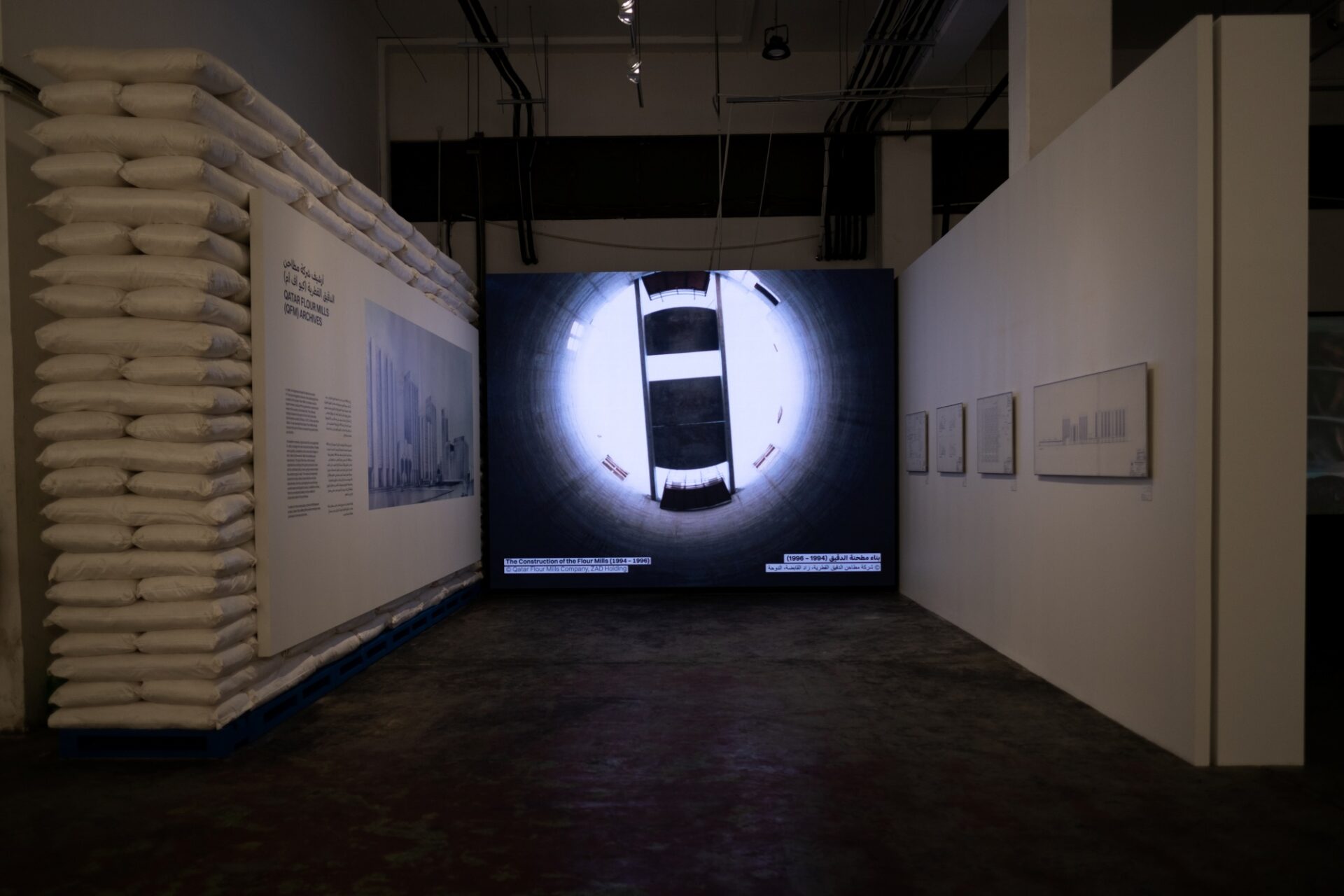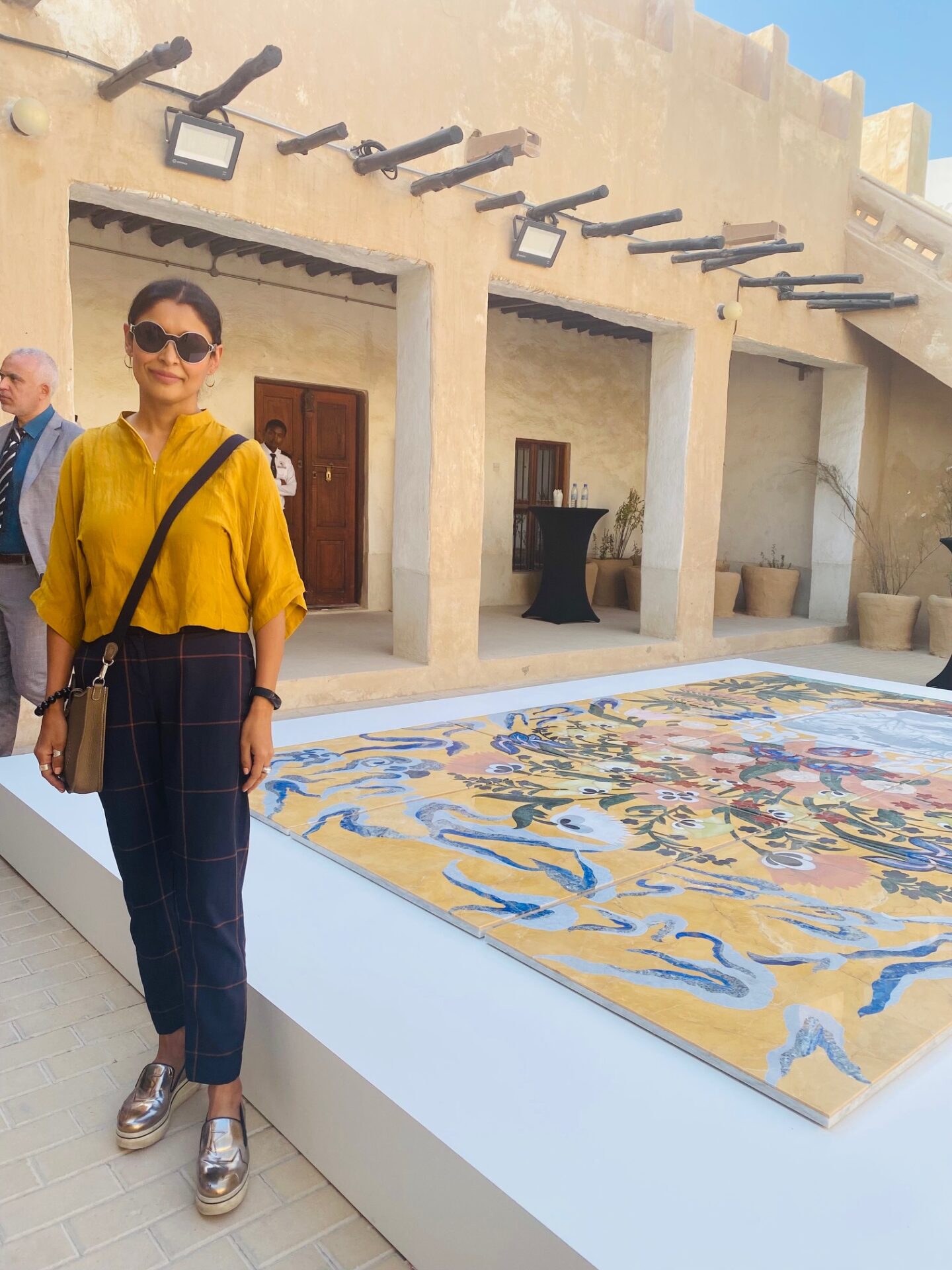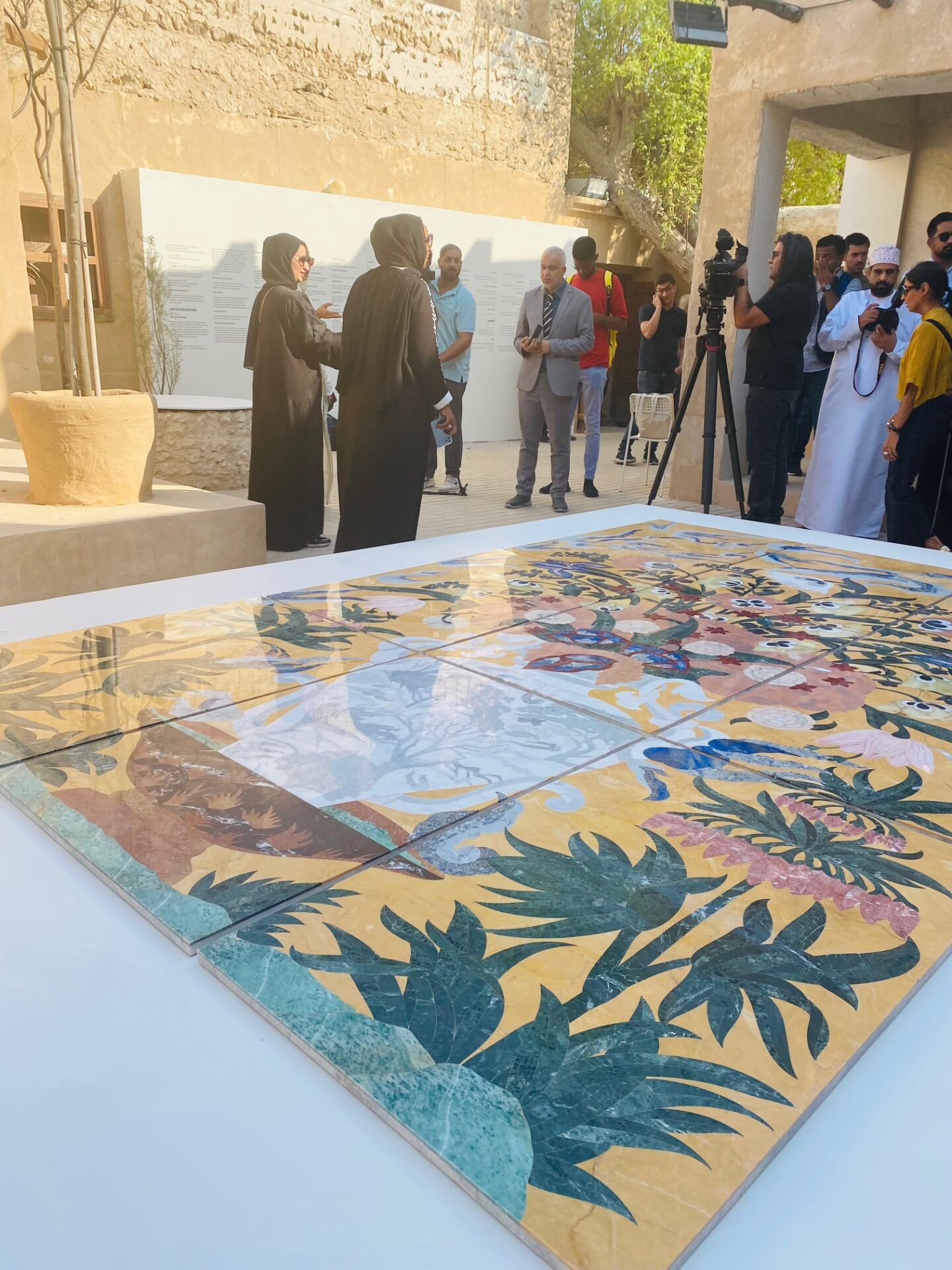Structure is the Architecture for Art Mill Museum
The Art Mill Museum 2030 which is on view till March 30 2023 at the Qatar Flour Mills Warehouse and the recently renovated Al Najada Heritage House No. 15 introduces us to the concept of the museum, the architectural project by ELEMENTAL, led by Pritzker Prize-winning architect Alejandro Aravena, and the garden design. SCALE spoke to Aravena about the Museum design, the significance and the history of the location to the project. We also spoke to the Principal Designer Adrien Gardere of Studio Adrien Gardère, Paris who have designed the Exhibition.
Completing a cultural district that already comprises the Museum of Islamic Art, MIA Park and the National Museum of Qatar, the Art Mill Museum, when complete, will house an exceptional and international art collection assembled over the past 40 years, with multidisciplinary works of great diversity dating from 1850 to the present, revealed Qatar Museums. Gifted with one of the most spectacular and historic sites in the centre of Doha, the Art Mill will be pre-eminent in Doha’s waterfront ensemble of institutions dedicated to art and is expected to become one of the world’s leading cultural centres.
The proposed site for the Art Mill was originally a key node within the Arabian Gulf port, essential for the import of grain. It is presently occupied by Qatar Flour Mills, which sits to the east of Museum of Islamic Art (MIA). The site has a distinctive open aspect with three sides adjoining Doha Bay, and the other linking the city. The mill operation will now move to purpose-built new facilities.
The architects were chosen by a world-wide competition which had around 400 participating architectural practices competing for the Art Mill International Design Competition, that ran from June 2015 to May 2017. The competition was won by Chile-based practice, Elemental, whose design was described by the jury as “a serene artwork, where the structure is the architecture.” Elemental is led by Alejandro Aravena, the 2016 Pritzker Prize Laureate.
For the Art Mill Museum, the most important feature is its location and the existing structures of the flour mill. Elemental’s winning concept took as its inspiration the rhythmic monumental grain silos that are the industrial legacy of the original Flour Mills on the site, which have produced bread for the State since the 1980s. However, the team added to the strict geometry of retained silos a looser grouping of new silos that will act as cooling chimneys circulating air through the site that extends spectacularly on three sides into Doha Bay.
SCALE spoke to Aravena to understand more about the design process. On whether the existing flour mill was expected to be used in the design, Aravena describes the initial process in the competition where the participating architects were taken around the site, and how the existing flour mill with the silos left an impact which later translated to the design: “When you enter a space like that, it is self-explanatory that such experiential spaces had to be retained,” he says, “Even for the exhibition, when such a silo is recreated it is useful for us to understand how the space will be.”
The flour mill is characterised by the presence of four sets of 16 silos which informs the design, but that is the only reason, clarifies the architect, “There are environmental reasons, these silos have huge embedded energy in them. If they are so powerful, why tear them down? In the process of the design, one of the decisions we took was to keep as many old structures as possible. From the point of memory, there is history in these buildings, it is important to keep them intact.”
“The industrial process of milling has left a fascinating legacy in the layout and spaces of the existing buildings on the site, notably voluminous spaces, and a rhythmic, patterned promenade of vertical silos. Some of the Flour Mills buildings possess an authentic monumentality in terms of positioning, scale, and noble forms. Re-using and adapting these structures was integral in the planning of the project,” says Aravena.
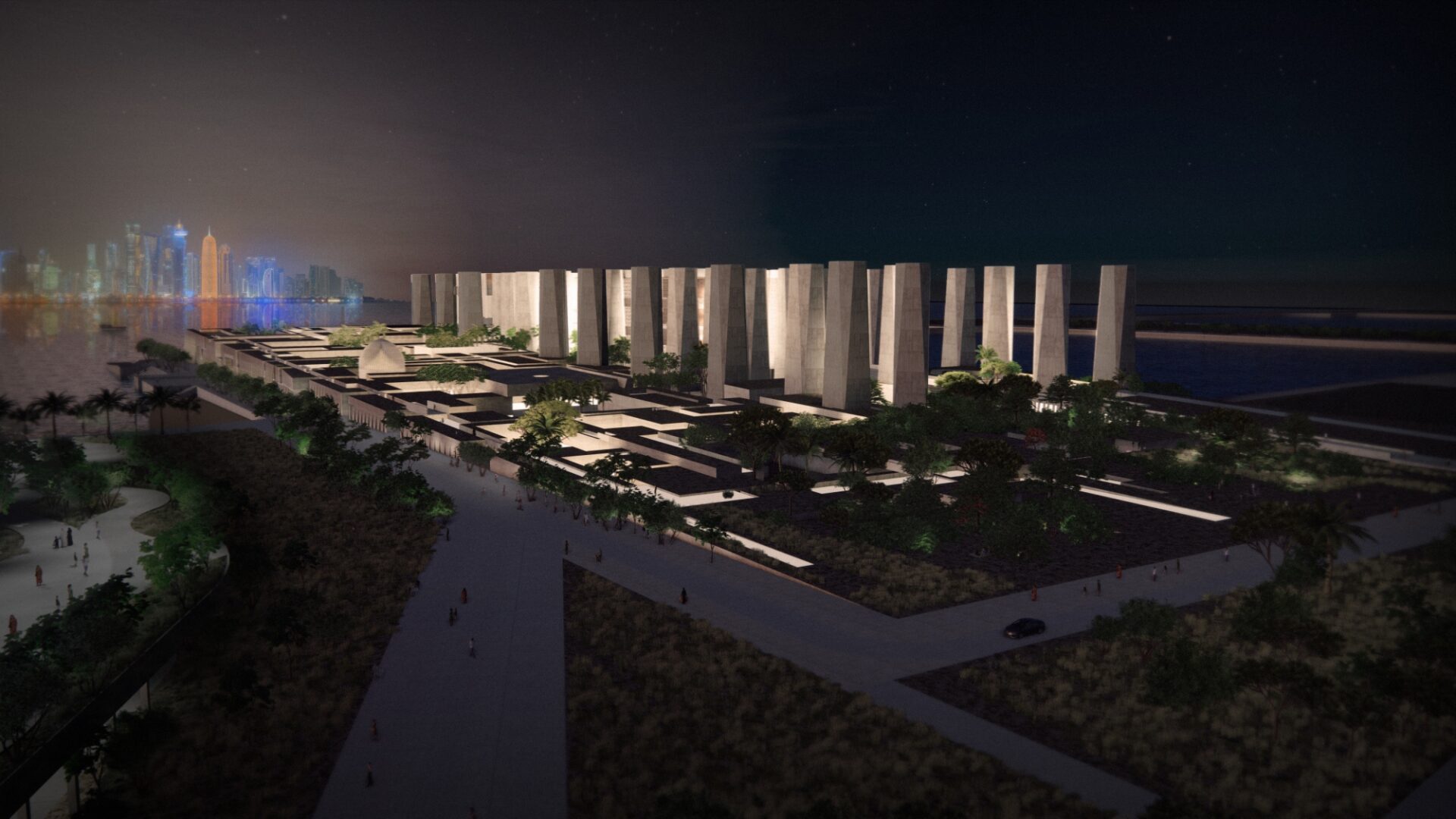
Art Mill Museum conceptual design: view from the South (Doha, Qatar), 2022, Rendering © Qatar Museums
“Our task as architects,” says the Pritzker winning architect, “it to identify the forces that will inform the form. And those forces come from the environment, the economy, from the legal constraints, material capacity, the youth and of course, the setting and then to analyse and synthesise all this. Having grown in an environment like Chile, which is largely a desert, we understand the country we must build in and we also realised that the two countries, Qatar and Chile, are different and familiar at the same time. Then you immediately know which tools to pick from your tool box.”
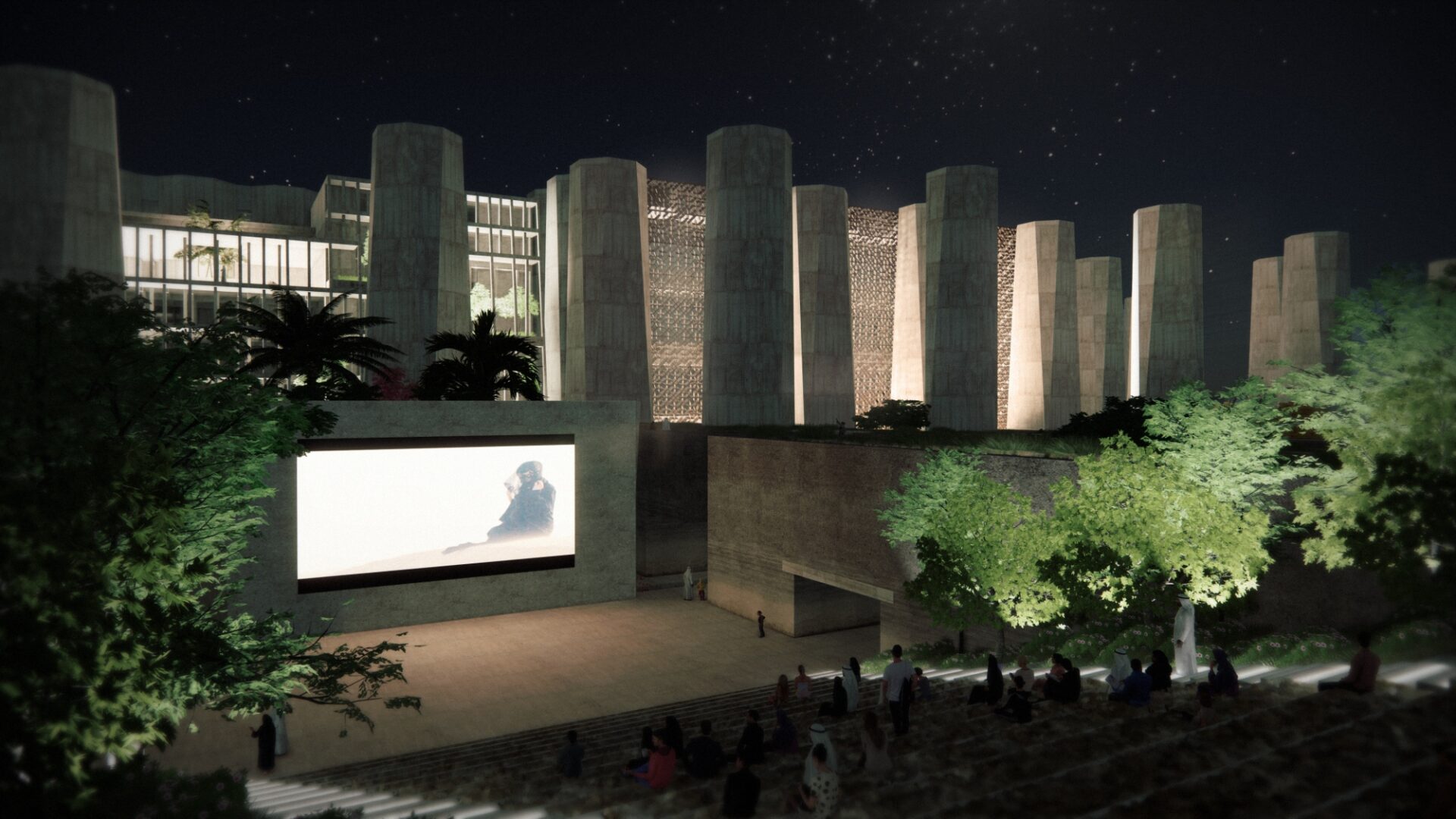
Art Mill Museum conceptual design: view of the open air theatre in the Creative Village (Doha, Qatar)., 2022, Rendering © Qatar Museums
In a main building of 80,000 square meters (including 23,000 square meters of gallery spaces), the Art Mill Museum will offer visual art icons as well as architecture and design, films and film props, fashion, crafts, and much more. A pioneering institution in the non-Western world, it will represent the modern and contemporary arts of all regions of the globe on an equal basis, engaging local and international audiences alike through multiple narratives of art history.

Art Mill Museum conceptual design: view of a small courtyard in the Creative Village (Doha, Qatar) 2022 Rendering © Qatar Museum
The Exhibition
The museum concept has been developed by art historian and museum director Catherine Grenier and the prefiguration team. A signature public garden is designed by VOGT Landscape Architects, led by Günther Vogt. A creative village for arts, crafts and design will provide recreational, learning and production resources for the general public and for the creative communities of Qatar and beyond.
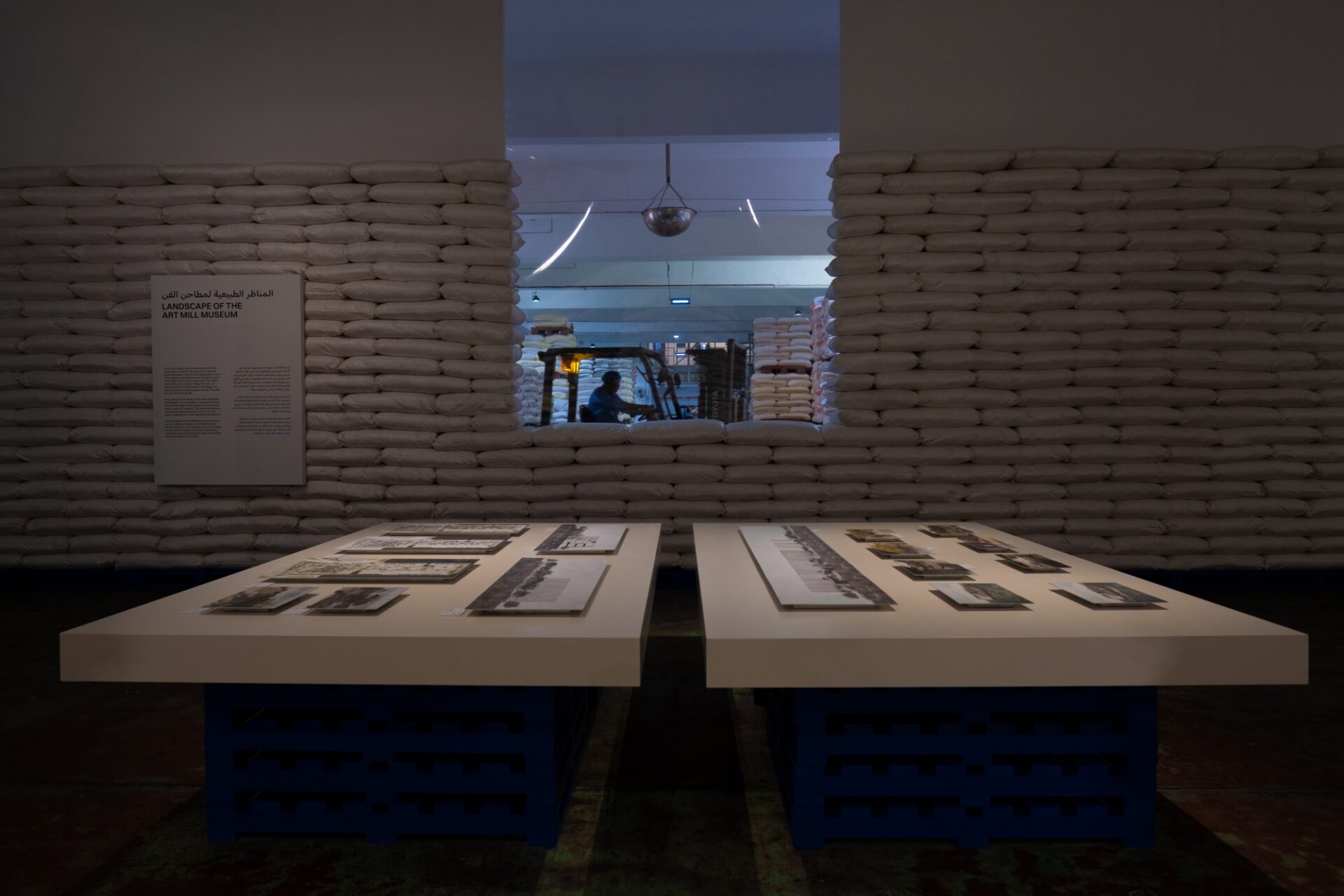
Not just the exhibits but the working flour mill becomes one of the exhibits of the Art Mill Museum Exhibition as designed by Studio Adrien Gardère, Paris.
The exhibition has succeeded in making us imagine the Museum in its completed form by placing us at the site of the structure and giving the viewer, the look and feel of the inside of the silos, which form an integral part of the design. The museology was so true to its intent that a glass window takes us right into the process of the working flour mill, reminding us as we pass through the exhibition, of where we are.
The exhibition has been designed by Studio Adrien Gardère, Paris, also the museographer of the Art Mill Museum, who have created a a factory setting with flour sacks demarkating each exhibit and the ongoing flour mill activities as part of the exhibit. Gardère who was in Doha at the opening, has a portfolio of museum designs and product designs, has succeeded in giving the visitors in Doha, a museology of an industrial setting. The exhibition has been so designed that each exhibit takes the space within a silo, that replicates the exact dimensions of the “real” silo at the site.
The Art Mill Museum Concept Director commented: “It is too early to present the extensive collections, but we are delighted to propose this sneak preview of the museum development process at this key stage prior to construction.”
Grenier continued, “Visitors will have access for the first time ever to a part of the flour mill where the project will emerge. The exhibition includes several new specially commissioned artworks that distinctly consider the flour mill and its current industrial activities as a subject. We are collectively creating a shared archive with memories of this significant site before its transformation.”
Site 1: From Flour to Art
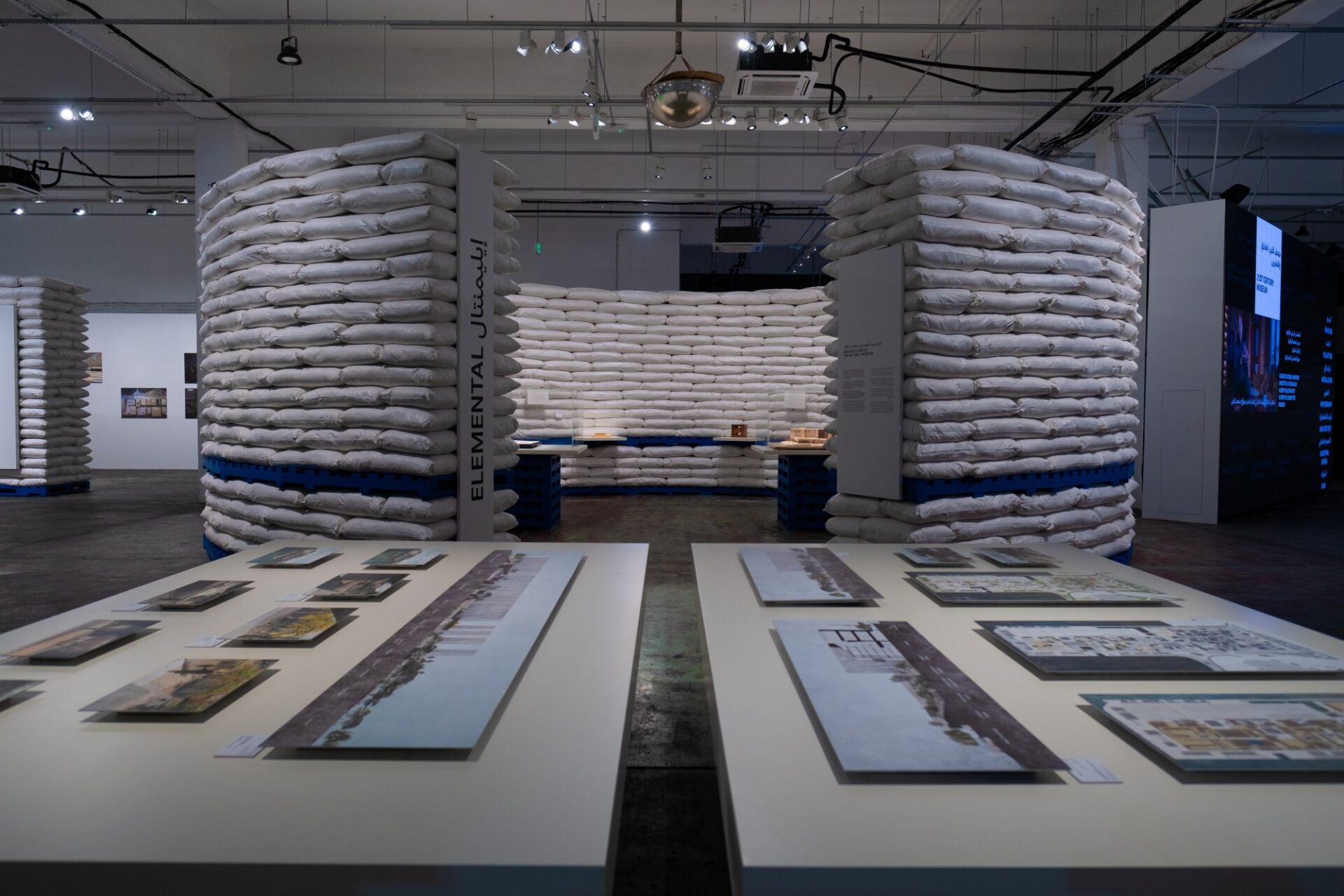
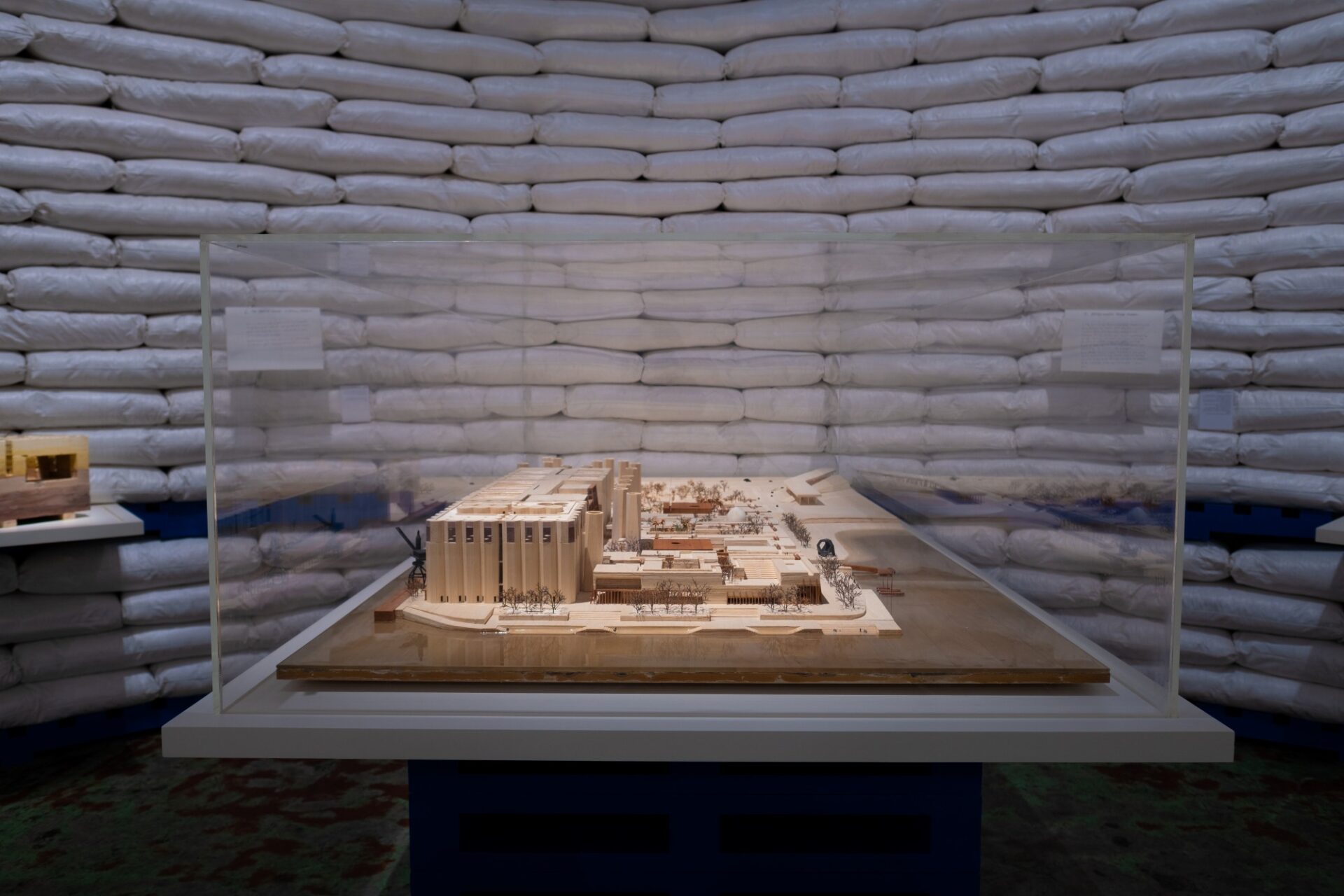 The installation From Flour to Art introduces the vision for the museum and gives the public its first opportunity to enter what will be part of the future complex. Visitors will see how the architect Alejandro Aravena and ELEMENTAL will reimagine the existing building, characterised by its spectacular concrete silos, to produce a museum that incorporates a creative village and public garden. The evolution of the project, from the international design competition in 2016 to now, will be revealed through an engrossing display that includes original models, drawings and renderings.
The installation From Flour to Art introduces the vision for the museum and gives the public its first opportunity to enter what will be part of the future complex. Visitors will see how the architect Alejandro Aravena and ELEMENTAL will reimagine the existing building, characterised by its spectacular concrete silos, to produce a museum that incorporates a creative village and public garden. The evolution of the project, from the international design competition in 2016 to now, will be revealed through an engrossing display that includes original models, drawings and renderings.
To reflect the transformation of the site and demonstrate how the Art Mill Museum will be a place for contemporary creativity, artists have been commissioned to create films and photographs establishing the parallels between the flour mill and the future museum. The commissioned artists are Yasmina Benabderrahmane (1983, France – works in Paris), Mohammed Kamal Al Emadi (1988, Qatar – works in Doha), François-Xavier Gbré (1978, France – works in France and Côte d’Ivoire), Ali Kazma (1971, Turkey – works in Istanbul and Paris), Amal Al Muftah (1994, Qatar – works in Doha), Shaima Al-Tamimi (1984, Yemen/Kenya – works in Qatar).
The second part of Art Mill Museum 2030, titled The Museum’s Garden, is installed at Al Najada Heritage House #15, a recently renovated house near Souq Waqif. This presentation is devoted to the development of the signature garden of the Art Mill Museum, designed by VOGT Landscape Architects, and its inspirations. A display of VOGT’s drawings and a selection of beautifully illustrated reference books from the collection of Qatar Museums and loans from Qatar National Library and from Mathaf: Arab Museum of Modern Art, will highlight the reinterpretation of traditional Islamic gardens. Also, on view will be two artworks: a mosaic by Hamra Abbas (1976, Kuwait – works in Lahore, Pakistan) and a commissioned film by Amal Al Muftah (1994, Qatar – works in Doha) produced in collaboration with Doha Film Institute (DFI).
The exhibition Art Mill Museum 2030 is curated by Aurélien Lemonier, Art Mill Museum Curator of Architecture, Design and Gardens, with Maryam Hassan Al Thani, Curator, Qatar Museums Exhibitions Department. The exhibition’s Project Manager is Malak Hassan, Qatar Museums Exhibitions Department. Commissions for the exhibition have been managed by Clémence Bergal, Art Mill Museum Head of Collections and Commissions.


